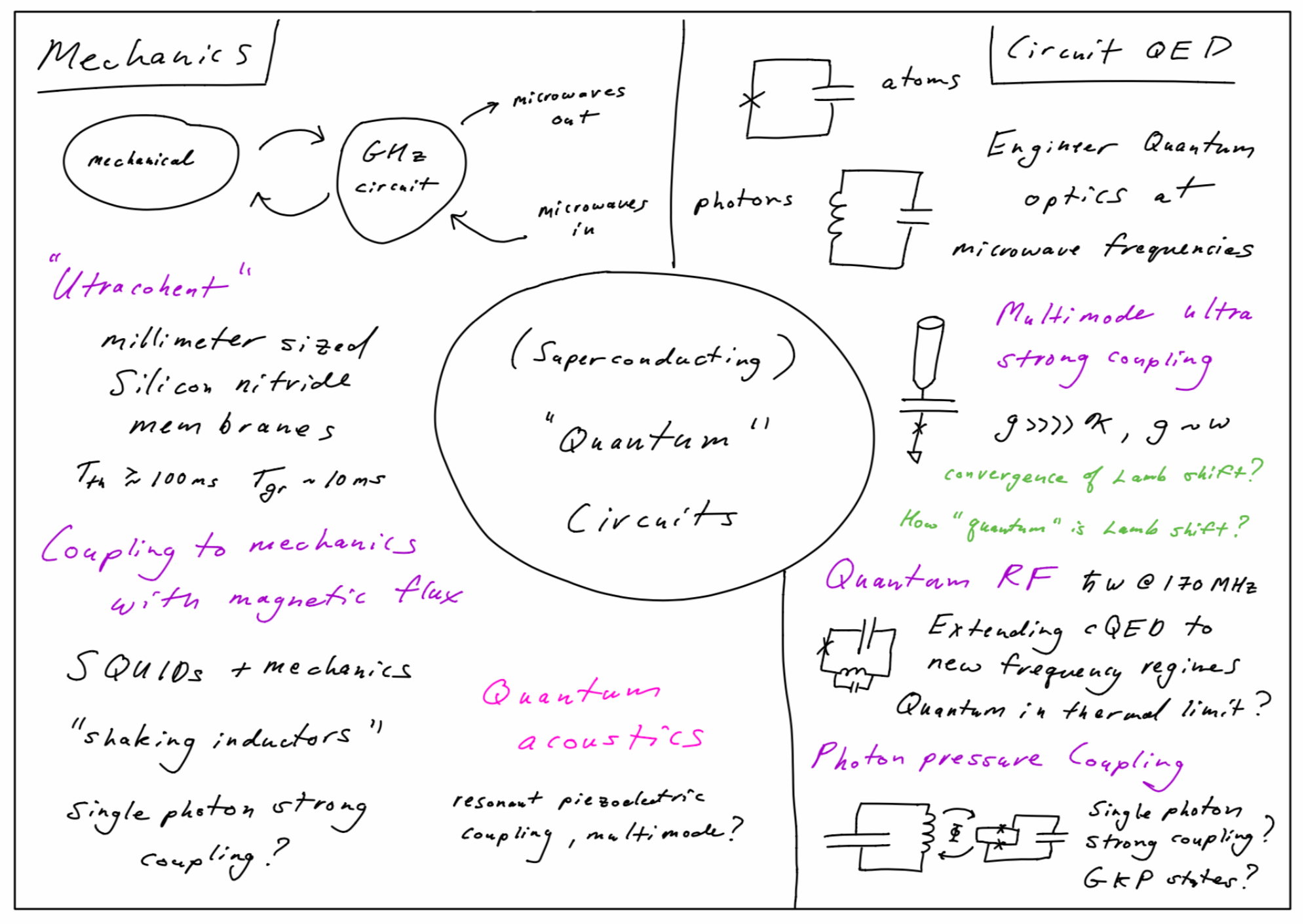In the group, we aim to explore the beavior of massive, macroscopic quantum superpositions by combining the tools of the superconducting qubit community with mechanical resonators.
The research in the group is focussed on two main activities: Quantum (nano)mechanics and Quantum Circuits, with superconducting quantum microwave circuits forming the core technology used in the group:

What is our core motivation? As we outlined in this publication, we believe that we can explore experimentally the boundary between quantum mechanics and general relativity in experiments that should be feasible in our lab. I explain a bit about the motivation for this, and tell a bit about myself and the group, in this recent video we developed with our communications department:

Here, our goal is to build and explore quantum states of nanomechanical resonators. To do this, we used a tool called “optomechanics”. Optomechanics is a technique in which one can use light trapped in a cavity to probe and control the motion of a mechanical resonator at the quantum level.
In the SteeleLab, the main focus of our research is implementing optomechanical systems using mechanical resonators and microwave photons. To do this, we use low-loss superconducting devices operating at millikelvin temperatures that resonate at microwave frequencies and can trap microwave photons for long periods of time. In these superconducting devices, we engineer a coupling of the trapped microwave fields to the motion of a high quality-factor mechanical resonator that oscillates at frequencies in the range of kHz to MHz. Using the coupling of these microwave photons to phonons in the mechanical object, we aim to cool the mechanical resonator to it’s quantum ground state and detect it’s motion with quantum sensitivity by looking at the microwave “light” that comes back out.
To trap the microwave “light”, we use a wide range of superconducting cavities, ranging from coplanar waveguides and 3D microwave cavities to superconducting resonant devices based on the Josephson effect, such as transmon qubits and SQUID LC resonators.

Here, we explore new ideas and implementations of quantum circuit using Josephson junctions, with the ultimate goal of finding ways to combine cQED tools with mechanical resonators. Some examples include our work on “Quantum RF” in which we engineer circuits that can interface GHz supeconducting qubits to MHz radiofrequency resonators, and what we have called “Photon Pressure” in which we engineer a new type of parametric coupling between superconducting circuits inspired by optomechanics.